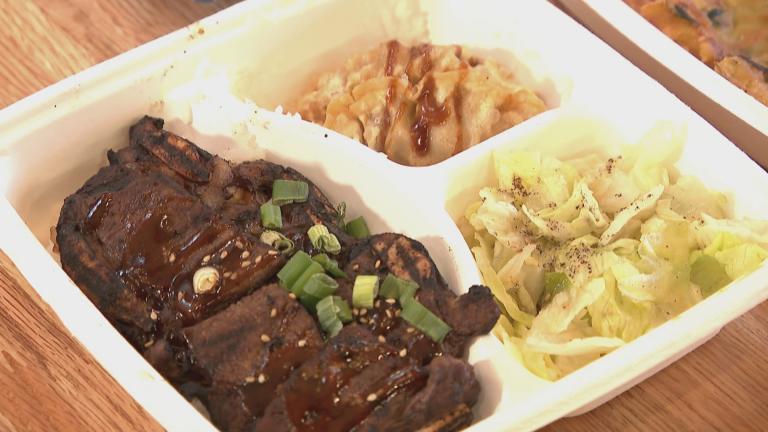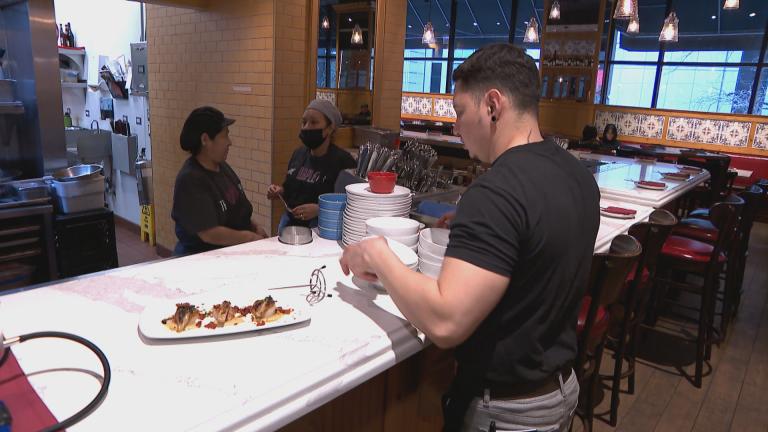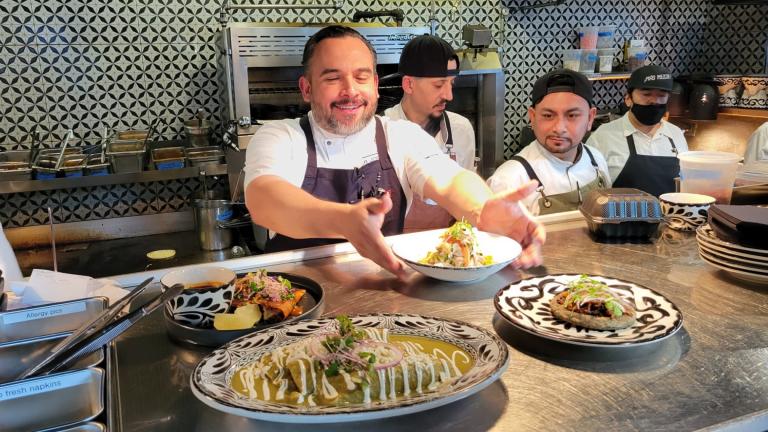Food insecurity continues to be far above pre-pandemic levels.
Advocates say supply chain issues and inflation are worsening this problem — higher grocery bills make it even harder for some to afford food.
This comes as food pantries work to meet the increasing needs of families they serve during the holiday season.
“The supply chain challenges have really been the second punch in the one-two punch. We had all of these families and individuals fall into need and then shortly after we had constrictions in the supply chain at a time that we are needing to source more food than ever before,” said Kate Maehr, executive director and CEO at the Greater Chicago Food Depository, which supports over 700 food pantries and soup kitchens in the Chicago area.
This means families are having to put more of their paycheck toward food, which is adding to the demands they face, she said.
The Gage Park Latinx Council hosts a weekly food pantry, and its director says families they serve are noticing the price increase.
“What they’re learning is their dollar isn’t going as far as it once was. They’re able to get less food or lesser quality food, and so we’re really having to step up our game and make sure we’re bridging that gap for them,” Antonio Santos said.
One priority of the council is providing culturally relevant food, and Santos said the supply chain shortage has made that more difficult.
“That’s been harder and harder as we’ve seen shortages and limitations on tortillas and other fresh produce that have been caught up in the supply chain problem as well,” Santos said.
This has been a challenge for the Sheldon Heights Food Pantry in Roseland as well, its director Eric Clark said. The pantry is a part of a program with the Greater Chicago Food Depository that allows them to pick up unsold food from area grocery stories.
“We’ve noticed because of their supply chain and the inability to put food on their shelves, we’re not able to pick up as much food as we have in the past,” Clark said. “Usually those stores will donate enough food, but at the moment they’re only giving us not even half as much as they have in the past.”
This all comes as food insecurity has been consistently up since the beginning of the pandemic. The depository says it has seen need increase by about 40% compared to pre-pandemic levels.
“It has been a sobering two years… The pandemic brought so many people closer to a cycle of need, and even though things are beginning to get better in terms of businesses opening and schools reopening, the sad fact is that we still are at levels significantly above where we were before the pandemic arrived,” Maehr said.
The impact of food insecurity hasn’t been felt evenly — Black and Latino communities have been disproportionately impacted. A recent Chicago area analysis by Northwestern University economists estimates that 36% of Black households with children, nearly 28% of Latino households with children and 17% of white households with children experienced food insecurity between September 2020 and February.
“We have to have a conversation about why people in this community all across the country are facing hunger, often families that have jobs,” Maehr said. “This is a broader structural conversation that we need to have.”
If you or someone you know is experiencing food insecurity, you can find a food pantry near you by visiting the Greater Chicago Food Depository’s website.








